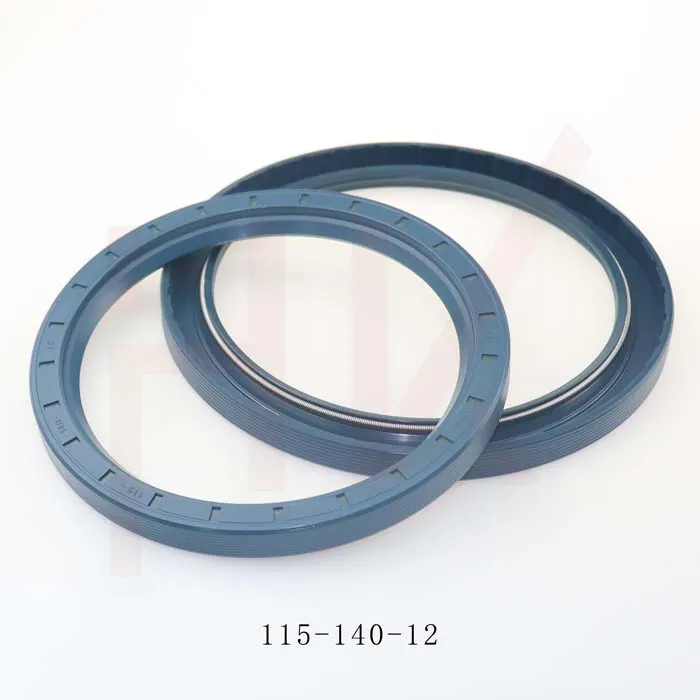Nov . 29, 2024 18:24 Back to list
High Pressure Oil Rail Sealing Kit for Enhanced Performance and Reliability
Understanding High Pressure Oil Rail Seal Kits Essential Components for Efficient Engine Performance
In the realm of automotive and industrial machinery, high pressure oil rail seal kits play a crucial role in ensuring the smooth operation of internal combustion engines. These kits are specifically designed to manage the delivery of high-pressure oil to various engine components while preventing leaks. In this article, we will delve into the importance, composition, installation, and maintenance of high pressure oil rail seal kits, highlighting their role in optimizing engine performance.
Importance of High Pressure Oil Rail Seal Kits
The oil rail in an engine serves as a conduit for delivering oil to various components, such as injectors and bearings, where lubrication is vital for operation. The high-pressure output of the oil rail is essential for adequately powering fuel injectors, particularly in diesel engines where increased pressure ensures atomization and effective combustion. Therefore, high-pressure oil rail seal kits become indispensable for maintaining the integrity of the oil delivery system.
A well-sealed oil rail prevents oil leakage, which can lead to several issues, including reduced engine performance, increased emissions, and potential engine damage over time. Furthermore, leaks can create dangerous situations under high-pressure conditions, leading to catastrophic failures. Thus, investing in a quality high pressure oil rail seal kit is crucial for the longevity and efficiency of an engine.
Composition of High Pressure Oil Rail Seal Kits
High pressure oil rail seal kits typically contain a variety of seals and gaskets made from durable materials capable of withstanding extreme pressure and temperature variations. The primary components include
1. O-Rings These are essential for creating a tight seal between the oil rail and other engine components. They are usually made from rubber or synthetic materials that can endure high pressures.
2. Seal Gaskets Gaskets are critical for sealing the joints between different engine parts, preventing oil from leaking out. They are often made from composite materials that resist oil degradation.
3. Washers and Spacers These components are used to ensure proper alignment and spacing within the oil rail structure to maintain effective sealing under pressure.
4. Retaining Rings These parts help to keep seals in place, ensuring that they do not displace or become misaligned during operation.
high pressure oil rail seal kit

Installation Process
Installing a high pressure oil rail seal kit is an intricate process that typically requires mechanical expertise. Here’s a basic overview of the installation steps
1. Preparation Begin by ensuring that the engine is cool and the oil has been drained. Gather all necessary tools, including wrenches, rags, and the new seal kit.
2. Remove Old Seals Carefully disassemble the oil rail from the engine, taking care not to damage surrounding components. Remove the old seals and clean the surfaces to eliminate any debris or remnants.
3. Install New Seals Place the new O-rings and gaskets in their respective positions, ensuring they fit snugly. It’s essential to follow the specific orientation and positioning recommended by the manufacturer.
4. Reassemble the Oil Rail Carefully reattach the oil rail, ensuring all components are aligned correctly. Torque the bolts to the manufacturer’s specifications to prevent any future leaks.
5. Test the System Once reassembled, refill the engine with oil and start it to check for any leaks. Monitor the system under pressure to ensure everything is functioning correctly.
Maintenance and Best Practices
To ensure the longevity and effectiveness of high pressure oil rail seal kits, regular maintenance is essential. Periodically inspect the seals for any signs of wear, such as cracks or degradation. Additionally, follow the manufacturer’s recommendations for oil changes and maintenance schedules to prevent undue stress on the oil rail system.
In conclusion, high pressure oil rail seal kits are critical components in ensuring the reliable performance of engines. By understanding their importance, composition, and proper installation, car owners and operators can maintain optimal engine function, ultimately prolonging vehicle life and enhancing performance. Investing in quality seal kits is not just a maintenance step; it’s a crucial decision for the health of your engine.
-
TCN Oil Seal Metal Ring Reinforcement for Heavy Machinery
NewsJul.25,2025
-
Rotary Lip Seal Spring-Loaded Design for High-Speed Applications
NewsJul.25,2025
-
Hydraulic Cylinder Seals Polyurethane Material for High-Impact Jobs
NewsJul.25,2025
-
High Pressure Oil Seal Polyurethane Coating Wear Resistance
NewsJul.25,2025
-
Dust Proof Seal Double Lip Design for Construction Equipment
NewsJul.25,2025
-
Hub Seal Polyurethane Wear Resistance in Agricultural Vehicles
NewsJul.25,2025
-
The Trans-formative Journey of Wheel Hub Oil Seals
NewsJun.06,2025
Products categories
















